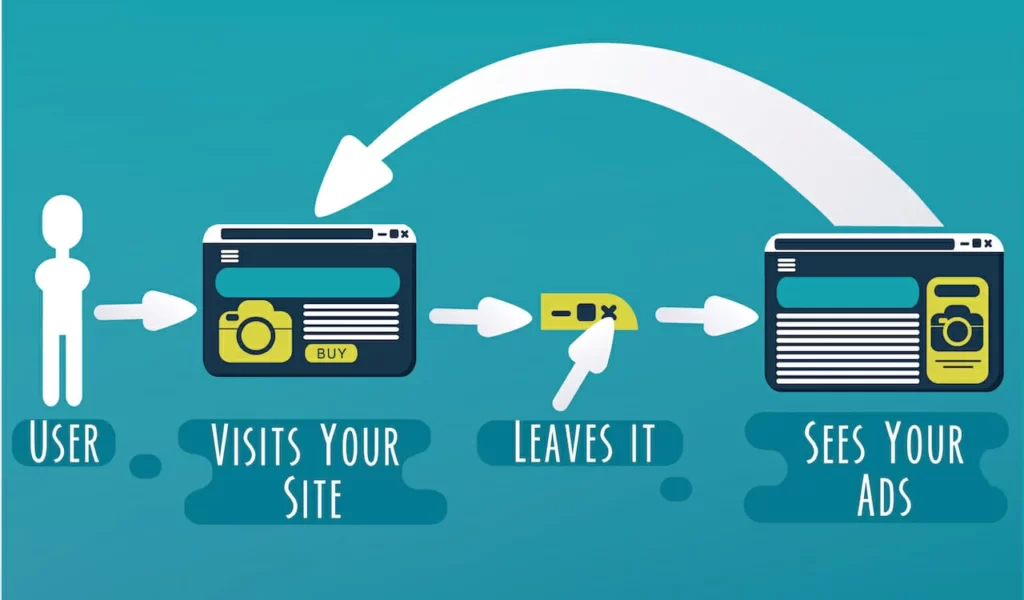Remarketing is a powerful strategy that allows businesses to reconnect with abandoned visitors and convert them into valuable customers. By implementing effective remarketing techniques, real brands have successfully leveraged the potential of these lost opportunities, increasing their conversion rates and driving significant business growth. In this article, we will explore the art of remarketing and examine real-life examples of brands that have mastered this strategy to re-engage and convert their abandoned visitors.
Before diving into remarketing techniques, it is essential to understand who abandoned visitors are and why they left your website without completing a purchase. There are various reasons for abandonment, including distraction, comparison shopping, price sensitivity, indecision, or concerns about security or shipping. By analyzing these factors and gathering insights from user behavior data, businesses can tailor their remarketing strategies to address specific pain points and increase the chances of conversion.
Capturing Visitor Information
To effectively remarket to abandoned visitors, you need to capture their contact information. Implementing lead capture forms, email sign-ups, or pop-ups that offer incentives in exchange for email addresses can help you build a valuable database of potential customers. This information enables businesses to continue engaging with visitors through targeted email marketing campaigns, nurturing their interest and encouraging them to return. Amazon, the e-commerce giant, excels in capturing visitor data through its “Wish List” feature. When users add products to their wish list but don’t complete the purchase, Amazon sends personalized emails with price drop notifications or related product recommendations. By leveraging visitor data, Amazon keeps users engaged and entices them to return and make a purchase.
Personalized Messaging
Tailoring remarketing messages based on visitor behavior is crucial for creating a personalized experience. By addressing the specific actions or products that visitors showed interest in, businesses can demonstrate understanding and relevance. Craft messages that highlight the benefits, address concerns, provide additional information, and offer incentives to entice visitors back to your site. Personalization can significantly increase the effectiveness of your remarketing efforts and drive conversion rates. Netflix, the renowned streaming platform, utilizes personalized messaging to re-engage abandoned visitors. After users sign up for a free trial but fail to subscribe, Netflix sends targeted emails suggesting TV shows or movies based on their initial preferences. By providing personalized recommendations, Netflix piques the user’s interest and reminds them of the value they can gain by becoming a paying subscriber.
Dynamic Remarketing Ads
Dynamic remarketing ads take personalization a step further by displaying customized ads to visitors when they browse other websites or social media platforms. These ads showcase the exact products or services the visitor viewed, reminding them of what they left behind and reigniting their interest. Dynamic remarketing ads are powerful tools for creating a consistent brand presence and encouraging visitors to return and complete their purchase. Take the example of a travel website like Booking.com. When a user searches for a hotel in a specific city but doesn’t complete the booking, Booking.com displays targeted ads showcasing the same or similar hotels across different websites. By reminding users of their initial search and presenting enticing offers, Booking.com encourages them to return and complete their booking.

Abandoned Cart Recovery Emails
Abandoned cart recovery emails are automated messages sent to users who added items to their cart but did not complete the purchase. These emails serve as gentle reminders, reiterating the items left behind and offering incentives such as discounts, free shipping, or limited-time offers. By creating a sense of urgency and providing an extra nudge, businesses can significantly increase the chances of cart recovery and conversion. E-commerce brand ASOS excels in abandoned cart recovery emails. If a user adds items to their cart but leaves the website without purchasing, ASOS sends a series of emails. These emails include personalized subject lines, images of the abandoned products, and discounts to incentivize the user to return and complete the purchase. By addressing the user’s specific interests and providing a compelling offer, ASOS successfully recovers abandoned carts and boosts conversions.
Retargeting Campaigns
Retargeting campaigns, implemented through platforms like Google Ads or Facebook Ads, allow businesses to display targeted ads to people who have previously visited their website. These ads can include special offers, product recommendations, testimonials, or new arrivals to recapture the visitor’s attention and encourage them to revisit your site. Retargeting campaigns are highly effective in keeping your brand top of mind and increasing the likelihood of conversion.

Exclusive Offers and Promotions
Creating exclusive offers or promotions for your remarketing audience can provide a powerful incentive to revisit your site and make a purchase. Limited-time discounts, freebies, loyalty rewards, or early access to new products or services can create a sense of exclusivity and urgency, compelling abandoned visitors to take action. These exclusive offers and promotions not only drive conversions but also foster a sense of loyalty and engagement with your brand.
Social Media Engagement
Engaging with abandoned visitors on social media platforms can be an effective remarketing strategy. Encourage them to follow your brand, interact with your content, and participate in discussions. By maintaining an active presence on social media, you can keep your brand top of mind and build a relationship with your audience, increasing the likelihood of conversion when they are ready to make a purchase. Nike creates compelling content, including inspirational stories, athlete collaborations, and interactive campaigns, to keep their brand top of mind. By encouraging users to follow their social media accounts, Nike maintains a strong presence and builds a community around their brand. This ongoing engagement increases the likelihood of conversion when users are ready to make a purchase.
A/B Testing and Optimization
To master the art of remarketing, continuous testing and optimization are essential. Experiment with different ad formats, messaging, offers, and timing to identify the most effective combinations for re-engaging and converting abandoned visitors. Track and analyze the results, paying attention to key metrics such as click-through rates, conversion rates, and return on investment (ROI). By fine-tuning your remarketing strategies based on data-driven insights, you can optimize your efforts and achieve maximum effectiveness. Real brands recognize the importance of continuous testing and optimization in remarketing campaigns. For example, Spotify, a leading music streaming platform, constantly experiments with different ad formats, messaging, and offers to re-engage abandoned users. By analyzing metrics such as click-through rates and conversion rates, Spotify identifies the most effective strategies and fine-tunes their remarketing efforts to achieve maximum results.
Conclusion
The art of remarketing holds immense potential for businesses seeking to re-engage and convert abandoned visitors. By understanding their behavior, capturing visitor information, personalizing messaging, utilizing dynamic remarketing ads, sending abandoned cart recovery emails, implementing retargeting campaigns, offering exclusive promotions, engaging on social media, and continuously testing and optimizing strategies, businesses can significantly increase their chances of turning lost opportunities into loyal customers. Remarketing requires a strategic approach, constant refinement, and a deep understanding of your audience, but the rewards are well worth the effort—a higher conversion rate, increased sales, and long-term customer loyalty.



